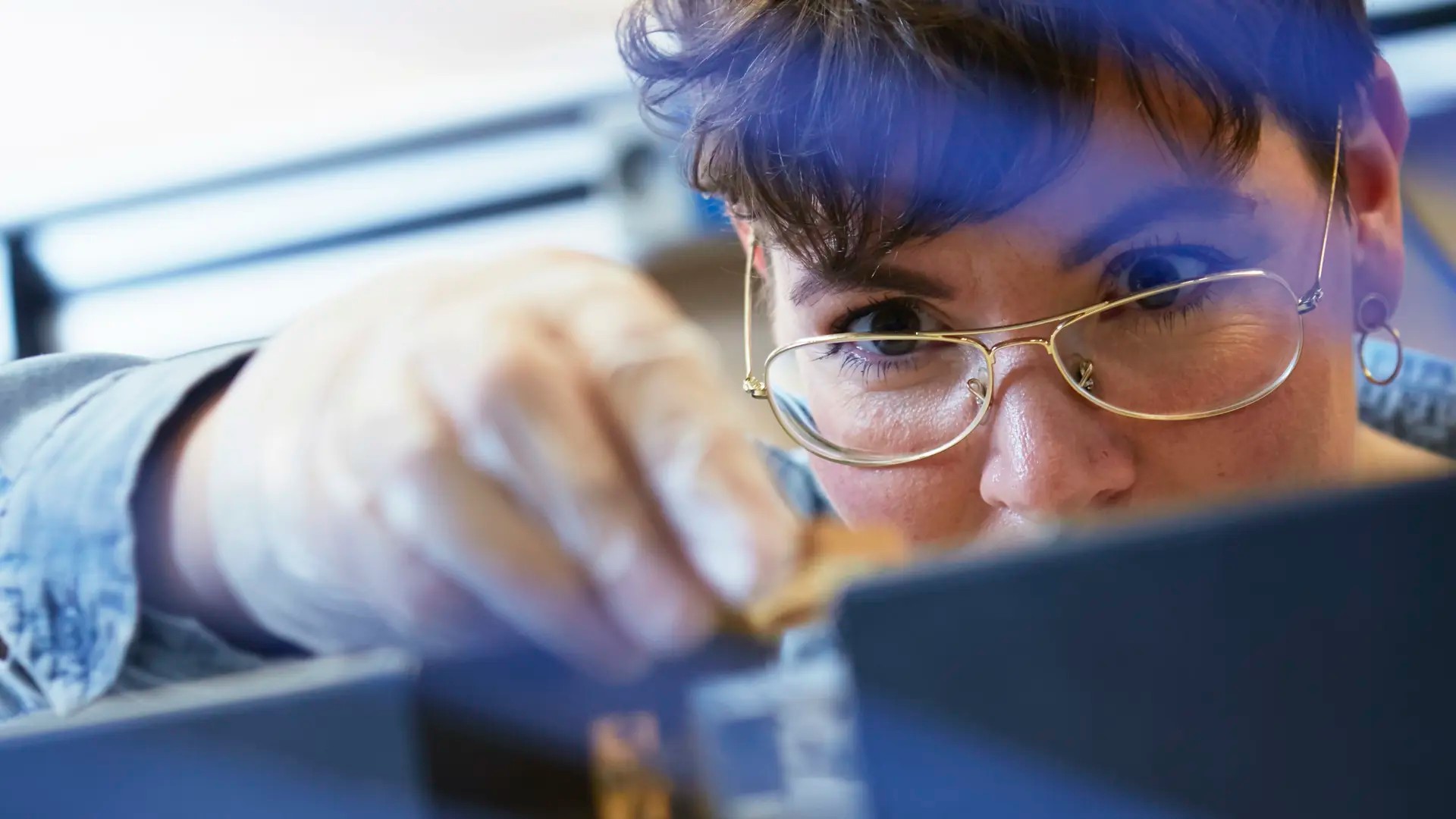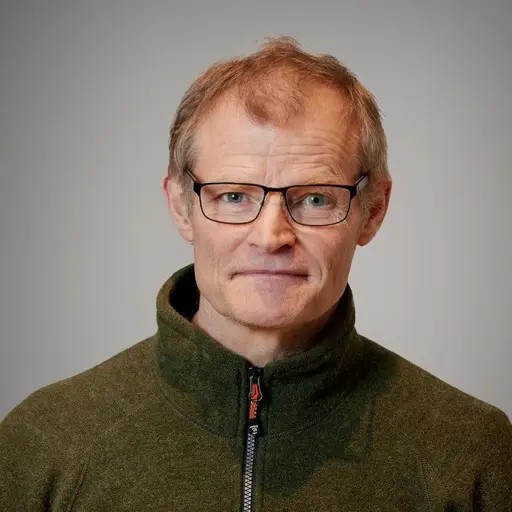
We demonstrate innovative technologies within the terahertz (0.3 – 10 THz) spectra with applications ranging from basic science to future wireless sensors and communication systems. Today, terahertz technology is an indispensable tool for space science, hoping to gain fundamental knowledge of the origin of our universe and for atmospheric science, which is directly related to the environmental challenge and climate change effects.
Sandwiched between the visible light on the short wavelength side and radio waves on the long wavelength extreme, the sub-millimetre wave radiation or terahertz wave radiation has long been considered the last uncharted scientific gap in the electromagnetic spectrum. This is the part of the spectrum where optical and microwave techniques meet. Our research aims to close the THz-gap and light up the last dark region of the electromagnetic spectrum.
With a strong heritage in instrumentation for radio astronomy, we focus our research on the following main topics:
Research topics

Superconducting terahertz detectors
Detection of weak emission from molecules and atoms in the interstellar medium (the basis for star and planet formation), or from tiny concentrations of atmospheric pollutants require THz receivers with extreme sensitivity and large bandwidth. We study novel THz wave detection approaches in new materials and devices in an attempt to widen the horizon for future space science instrumentation.

Terahertz techniques for life science applications
With energy levels in the few meV range, terahertz frequencies have unique spectroscopic features for monitoring biological molecules. Moreover, due to the low energy level of terahertz radiation (few meV), the interaction with biological matter is non-ionizing and generates very low cell and tissue damage. This enable sensing and sample identification in a direct non-invasive and label-free manner using terahertz waves.

Terahertz electronics and systems
The continuous interests in terahertz wave applications have generated a strong need for reliable, room temperature operational and compact THz electronics. An example is front-end electronics and instrumentation for the European Meteorological Operational satellite programme (MetOp), with the plan to monitor the climate and to improve weather forecast. Our team has been involved in research and establishing space qualified THz components (Schottky and HBV), manufactured in the Nanofabrication facility at MC2.

Ultra low-noise microwave devices and circuits
The single most important function in electronics is amplification. This is fundamentally limited by noise in the electrical signal. In applications such as quantum information systems, deep-space communication and radio telescope arrays, the noise in the incoming signal may limit the whole system performance. Minimizing the noise level in the amplifier is therefore of interest not only for increased sensitivity in detection of weak signals but also for exploring the fundamental limits in electronic amplification ultimately determined by quantum physics.
State-of-the-art laboratories
We fabricate unique terahertz components in our state-of-the-art Nanofabrication facility at MC2 and evaluate demonstrators in our top-class terahertz characterisation facility (Kollberg laboratory). Our educational activities include circuit theory, microwave engineering, physics, microelectronics, and semiconductor device physics courses at undergraduate and graduate levels.
Laboratories
News from Terahertz and Millimetre Wave

Students’ paper in focus at international conference
”Being part of a conference like this is an incredible opportunity to meet researchers, students, and industry professionals from around the world. Hopefully, we’ll build some lasting connections,” says Chalmers student Gabriel Josefsson, who, along with three fellow students, presented a paper based on their bachelor's thesis at this year's International Conference on Infrared, Millimeter, and Terahertz Waves.

Semiconductor research receives prestigious ERC grant
Three researchers from Swedish universities were awarded the prestigious ERC Advanced grant for research in Physical Sciences and Engineering. One of these is Jan Stake, Professor of Terahertz Electronics at the Department of Microtechnology and Nanoscience. As the only researcher from Chalmers to be given the grant in 2024, he now receives approximately SEK 28 million for his research project in semiconductor technology.

Jan Grahn awarded “Guldäpplet” by the students
"Jan succeeds in putting his teaching in a larger context through connections to the industry and current research, and he also makes his students feel heard." That's part of the motivation as Jan Grahn, Professor at the Terahertz and Millimeter Wave Laboratory at MC2, receives the students' pedagogical prize “Guldäpplet” (the Golden Apple) for teaching the course "Electrical Circuits and Systems", part of Engineering Physics programme at Chalmers.

Space technology from West Sweden on its way to Jupiter
On April 14, 2023, at 14:14 Swedish time, the European Space Agency's space probe JUICE - JUpiter ICy moons Explorer - was launched on its long journey to Jupiter's largest moons. On board the probe are ten super-sensitive instruments, one of them called SWI, which will observe the thin atmospheres of water surrounding Jupiter's largest moons and provide answers to the question of whether there are conditions for life.

Radar measurements can vastly improve a key technology for the energy and process industries
Fluidized beds is a technology used in a variety of industries and plays an important role in the transition to green energy and the production of food and drugs. However, the process that occurs inside a fluidized bed is extremely complex and – due to a lack of effective measurement techniques – has remained largely unknown. Now, researchers from Chalmers University of Technology in Sweden have developed a high-frequency radar technique that can measure exactly what is happening inside a fluidized bed with unrivalled precision. This breakthrough could lead to completely new and more efficient processes in several industries, including energy conversion

Transistor technology from Chalmers in NASA climate satellites
Since 2021, NASA launches several cube satellites for studying tropical cyclones from space. In the satellites, you can find amplifiers from the company Low Noise Factory based on transistor technology developed at the Department of Microtechnology and Nanoscience (MC2), Chalmers University of Technology. The amplifiers were designed for detecting oxygen and water in the atmosphere with very high sensitivity, and the semiconductor transistor chips were fabricated in the cleanroom laboratory at Chalmers.
Head of laboratory and senior researchers
Head of laboratory
Senior researchers
Publications in Chalmers Research
We continually document our research in various types of publications, which are registered in Chalmers Research. Follow this link to see recent publication lists



